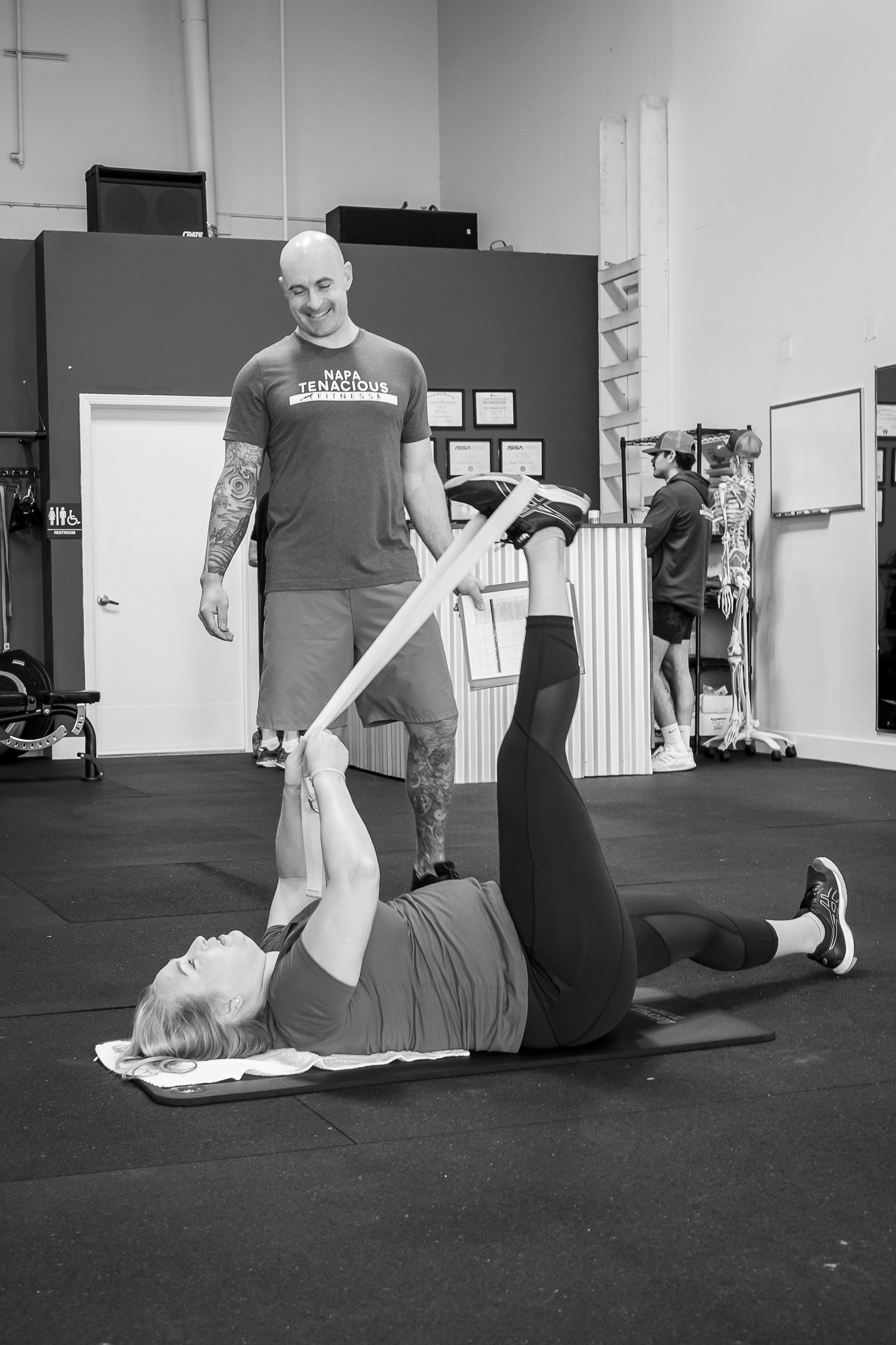“I’m wound up so tight, you could play me like a violin.” exclaimed one of our personal training clients at the beginning of an exercise session. This client was a busy and successful insurance sales representative. In a life that was “pedal-to-the-medal” and required a “can’t stop, won’t stop” attitude, he developed tension in both the physical and psychological aspects of his life. Activities such as sitting at a desk to answer and make phone calls, browsing through hours of email, and myopically managing financial spreadsheets put a significant amount of strain on his neck, back, and hips. Not only were the structural connections of his muscles tight, but he mentioned that his stress levels were through the roof.
We knew that a customized exercise prescription would help decrease pain and manage stress levels from his demanding job that required him to perform at an elite level. Squats, push-ups, and planks are safe applications to start clients when entering a new personal training program. These exercises are the easiest to master and develop competency to repeat in future exercise sessions efficiently. However, our first action plan was to develop tactics to unwind the stress for an exercise participant who can relate their tension to a violin string at the brink of snapping.
Imagine a crane holding a load of rebar. The crane wire has a significant amount of tension applied to it. The demands of that wire must be able to withhold two thousand pounds of an awkwardly distributed bundle of rebar. The crane must skillfully put this load on the ground. When the rebar rests on the ground, the tension on the crane wire subsides and the twine stretching within the wire reverts to its initial shape. The crane operator must release this tension on the wire at some point. If the rebar load is left suspended for too long, the metal twine of the wire can stretch out and deteriorate over time. Crane operators know that a heavy load suspended for too long can eventually make their transportation wire snap. Therefore, the haul must be lowered and removed from the crane wire as soon as possible.
The connective tissues comprising our ligaments, tendons, and muscles aren’t much different in their mechanical function than a crane wire holding heavy objects. Our bones act as levers and fulcrums, working together with our muscles’ primary motors, manipulating objects, and moving them to the desired location. However, we aren’t a crane, and our muscles aren’t a collection of ultra-strong metal wire twined together. Instead, we are organisms filled with muscles, bones, internal organs, a complex nervous system, and a psycho-emotional computer database. These factors are afflicted by the stressful overload of the external stimuli caused by our demanding lifestyles.
Our immediate response as fitness coaches is to optimize a client’s exercise experience whose muscles in their neck, back, and hips feel like strings about to snap. We concentrate our efforts to relieve tension. Instead of prescribing this exercise participant with compressive resistance training techniques, our intuition encourages us to include exercises in the opposite spectrum of resistance training. That means exercises like push-ups, squats, and planks aren’t our primary concern. Instead, the immediate need for this exercise participant would be to perform flexibility, mobility, and injury prevention techniques. Exercises promoting blood flow and pain relief to the neck, lower back, and hips could include light isometric exercises, Yoga-like movements while laying down, or static stretching techniques. In the situation of an exercise participant overloaded with physical and psycho-emotional stress, performing stretching, joint mobilization, and joint injury prevention modes of exercise can help a person with a demanding life perform optimally at their challenging career.
Listen to the cues our body gives us in response to the demands our life applies to us. For example, if we are lethargic and sedentary, perhaps picking up weights would provide us with the jump start we need to have more energy. However, if we have been through a hyper stressful day, perhaps we should choose exercises that help us calm down and decrease any tension we may be experiencing.
Sean McCawley, the founder and owner of Napa Tenacious Fitness in Napa, CA, welcomes questions and comments. Reach him at 707-287-2727, napatenacious@gmail.com or visit the website napatenaciousfitness.com.

